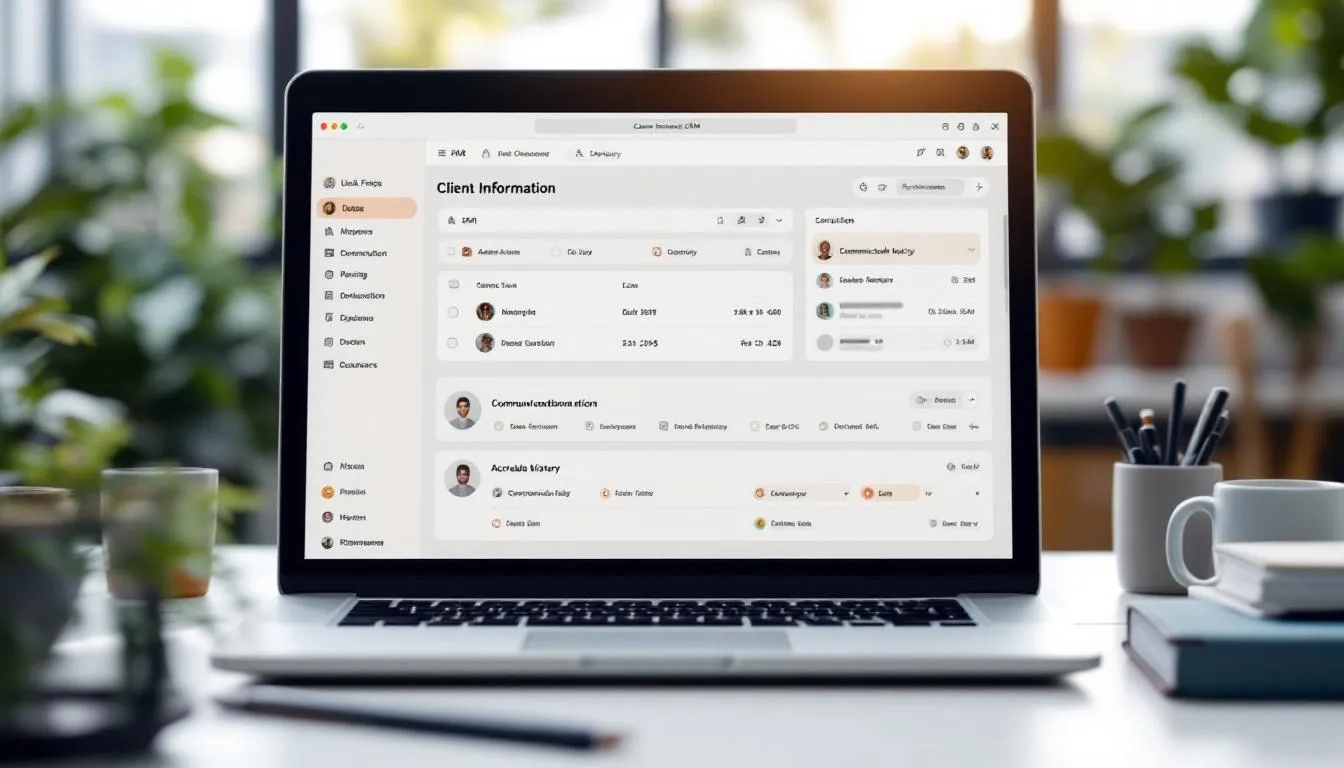Your team is drowning in manual tasks. Email management, appointment scheduling, invoice tracking—everything takes longer than it should. You’ve considered automation tools, but there’s a nagging fear: what if efficiency comes at the cost of the personal relationships that built your business?
This dilemma faces every growing Brunei SME. The manual processes that worked when you were smaller now consume hours that should be spent on strategic growth. But the personal attention that clients value feels impossible to maintain while scaling operations efficiently. The main challenge is to streamline operations while continuing to personalize client interactions.
The businesses successfully navigating this challenge understand that streamlining operations isn’t about replacing human connection—it’s about freeing your team to focus on the most valuable interactions that matter the most. Strategic automation handles routine tasks while preserving, and even enhancing, the personal service that drives client loyalty. Used effectively, automation can create a foundation for memorable customer experiences and sustainable growth.
Key Takeaways
- Strategic automation eliminates time-consuming routine tasks while preserving high-value personal interactions that build client relationships
- Process mapping identifies which activities require human touch versus those that benefit from systematic handling
- Technology integration should enhance rather than replace the right cultural values that drive business success in relationship-focused markets
- Gradual implementation allows teams to adapt to new systems while maintaining service quality and personal connection standards
- Client communication about operational improvements can strengthen relationships by demonstrating commitment to better service and to help clients understand the benefits
- Efficiency gains from streamlined operations create capacity to make deeper client engagement and strategic business development possible
- Local business culture preferences should guide automation decisions to ensure changes feel appropriate rather than impersonal
- Systematic operations provide consistency that supports rather than conflicts with personalized service delivery
- Strategies to streamline operations while maintaining a personal touch ensure organizations optimize efficiency without sacrificing customer experience
Understanding the Personal Touch Advantage
Why Personal Service Matters in Brunei’s Market
Brunei’s business culture places exceptional value on personal relationships, direct communication with decision makers, and individualized attention that makes clients feel valued rather than processed. A strong focus on customer ensures that every interaction is tailored to meet client expectations and preferences.
Personal service creates competitive advantages that larger, more automated competitors cannot easily replicate. When your customer can reach business owners directly, receive customized solutions, and experience flexible service delivery, they develop loyalty that transcends price comparisons.
The challenge isn’t whether to maintain personal service—it’s how to scale it sustainably. Manual processes eventually overwhelm growing businesses, reducing service quality and creating stress that actually damages the personal relationships you’re trying to preserve.
Identifying What Makes Your Service Personal
Document the specific aspects of your service delivery that clients mention most frequently in positive feedback. Leveraging customer data is essential to identify what clients truly value and to ensure these elements are consistently delivered. These elements become non-negotiable components that must be preserved during operational streamlining.
Personal service often includes direct access to expertise, customized solutions for unique situations, flexible scheduling that accommodates client preferences, and communication styles that feel natural rather than scripted. Tailoring your approach to customer needs ensures that your service remains relevant and valued.
Understanding which touchpoints matter most to the customer helps you distinguish between efficiency improvements that enhance relationships versus changes that might damage the connection and trust you’ve built over time.
The Cost of Inefficient Operations
Manual processes don’t just waste time—they create stress that reduces the quality of personal interactions. When team members are overwhelmed with administrative tasks, they have less energy and patience for the relationship building that drives business success.
Inefficient operations also limit growth potential. Without systematic processes, adding new clients often means longer hours rather than better systems, creating unsustainable pressure that eventually affects service quality and team satisfaction.
The businesses that scale successfully understand that operational efficiency enables better personal service by freeing teams to focus on activities that create genuine value for clients rather than just keeping up with administrative demands.
Strategic Process Mapping for Personal Service
Categorizing Activities by Value and Automation Potential
Divide your business activities into four categories: high-value personal interactions, repetitive tasks and routine administrative tasks, client-facing processes that benefit from consistency, and strategic activities that require human judgment and expertise.
High-value personal interactions include consultation meetings, problem-solving discussions, relationship building conversations, and any communication that requires emotional intelligence or cultural sensitivity.
Repetitive tasks and routine administrative tasks like data entry, appointment scheduling, invoice generation, and basic customer service inquiries often benefit from automation because consistency and speed matter more than personal touch.
Client-facing processes such as project updates, payment reminders, and service confirmations can be systematized while maintaining personal elements through customization and appropriate communication channels.
Mapping Client Journey Touchpoints
Analyze every interaction clients have with your business from initial contact through ongoing service delivery to identify opportunities for both efficiency improvements and relationship enhancement.
Some touchpoints benefit from automation because clients prefer speed and consistency: appointment confirmations, payment processing, basic information requests, and routine project updates. Mapping the process helps clarify the steps clients go through and highlights where automation can be most effective.
Other interactions require personal attention because they involve decision making, problem solving, or relationship building: initial consultations, service customization, issue resolution, and strategic planning discussions. Being attentive in the process ensures ongoing activities are managed with care and responsiveness.
The goal is ensuring that automation handles routine interactions efficiently while reserving human attention for moments that truly benefit from personal engagement and cultural understanding.
Preserving Cultural Values in Systematic Processes
Design systems that reflect and support the cultural values that matter to your clients: respect for time, personal attention, flexibility, and relationship preservation over rigid efficiency.
Automation and personal touch should be balanced to maintain efficiency without losing the human element. Automated systems should feel helpful rather than impersonal. Use language, timing, and communication channels that align with local cultural preferences rather than generic corporate approaches that might feel foreign. Being mindful in the context of each interaction ensures cultural values are preserved.
When implementing new processes, explain changes to clients in ways that emphasize improved service delivery rather than internal efficiency gains. Position systematization as enabling better personal attention rather than replacing it. Choose the right processes to automate so that efficiency is achieved without sacrificing the client experience.
Technology Solutions That Enhance Personal Service
Customer Relationship Management (CRM) Systems
Modern CRM systems help you provide more personalized service by organizing customer data, client information, interaction history, and preferences in ways that enable more meaningful conversations and customized service delivery. These systems use customer data to personalize every interaction, ensuring that each client feels valued and understood.
A well-configured CRM allows team members to quickly access client context before interactions, enabling more relevant and personal conversations even as your client base grows larger.
Choose CRM solutions that feel natural to use and integrate smoothly with your existing communication channels rather than forcing adoption of unfamiliar platforms that create barriers to personal interaction.
The goal is using technology to remember more about clients so you can serve them better, not to replace human judgment with automated responses that feel generic or inappropriate.
Communication Automation That Maintains Personal Connection
Email automation, appointment scheduling systems, and client portals can handle routine communications while preserving opportunities for personal engagement when it matters most. You can also use chatbots or SMS reminders to the benefit of your clients, ensuring they receive timely updates and support.
Automated communications should sound like they come from real people, reference specific client situations when possible, and provide clear pathways for personal contact when clients need human assistance.
Use automation to ensure consistent, timely communication on a regular basis rather than replacing all personal interaction. For example, automated appointment reminders can free up time for longer, more valuable consultation conversations.
Design automated messages to feel helpful and informative rather than pushy or sales-focused, maintaining the respectful communication style that builds trust in relationship-focused cultures.
Project Management and Workflow Tools
Systematic project management ensures consistent service delivery while creating transparency that clients appreciate and enabling team members to focus on value-creating activities rather than administrative coordination and make processes more efficient.
Client-facing project management tools can actually enhance personal service by providing transparency, enabling better communication, and allowing clients to access information conveniently without waiting for responses. Selecting the right tools for your business ensures that workflows are tailored to your unique needs.
Choose tools that integrate well with your existing communication preferences rather than forcing adoption of complex platforms that create barriers between you and your clients. The right solutions help to keep the personal touch in every project phase.
The goal is creating systematic approaches that support rather than replace the personal attention and flexibility that clients value in your service delivery. Leveraging these tools can create a seamless, efficient, and highly personalized client experience.
Implementation Strategies That Preserve Relationships
Gradual Implementation Approach
Introduce operational changes gradually rather than implementing comprehensive automation that might disrupt established client relationships or overwhelm team members who need time to adapt. You need to identify the most critical areas for phased implementation to ensure a smooth transition.
Start with internal processes that don’t directly affect client interactions: accounting automation, inventory management, or administrative task coordination that improves efficiency without changing client experience. If you want to minimize disruption, focus on these areas first.
Once internal systems are working smoothly, gradually introduce client-facing improvements that enhance rather than replace existing communication patterns and service delivery approaches.
Communicate changes to clients as service improvements rather than operational necessity, emphasizing how systematization enables better personal attention and more consistent service delivery.
Team Training for Technology Integration
Ensure team members understand how new systems support rather than replace the personal service values that drive business success, helping them see technology as a tool for better client relationships. This is a crucial step in maintaining trust and engagement.
Provide training that focuses on using technology to enhance personal service: accessing client information quickly, customizing automated communications, and identifying when personal intervention is needed. Training allows you to empower your team to use these tools effectively and to help them adapt to new workflows.
Develop protocols for escalating automated processes to personal attention when clients indicate preference for human interaction or when situations require cultural sensitivity and relationship management. This is especially important for maintaining high service standards.
Create feedback systems that allow team members to suggest improvements to automated processes based on client responses and relationship development needs. You can also encourage open communication to the team so they feel involved in the process.
Client Communication About Operational Changes
Explain operational improvements to clients in ways that emphasize enhanced service delivery rather than internal efficiency gains or cost reduction measures.
Position systematization as enabling more personalized attention by freeing up time for strategic discussions, problem-solving, and relationship building that creates genuine value to the client.
Provide clear pathways for clients who prefer personal interaction for any aspect of service delivery, ensuring they never feel forced to accept automated processes that feel uncomfortable. You can also offer alternative communication channels to the clients who want a more personal touch.
Use operational improvements as opportunities to demonstrate commitment to service excellence and long-term relationship building rather than just business efficiency. Create a feedback system to gather client input and continuously improve your processes.
Industry Use Case: Architecture Firm’s Operational Transformation
An architecture firm in Brunei was struggling with project management inefficiencies that were affecting their ability to provide the personalized service that differentiated them from larger competitors. The process of transforming their operations required careful planning and adaptation, and in the process, the firm had to address ongoing changes to ensure a smooth transition.
The main challenges included manual project tracking that consumed hours of administrative time daily, inconsistent client communication that sometimes left projects unclear about progress, and difficulty accessing project history during client meetings, which affected the personal service quality they prided themselves on.
The firm was concerned that automation might make their service feel impersonal and damage the close client relationships that generated most of their business through referrals.
The transformation focused on implementing systems that enhanced rather than replaced personal interaction. They introduced project management software that provided client access to real-time progress while maintaining regular personal check-ins for strategic discussions.
Key changes included automated project progress updates that freed architects to focus on design discussions rather than status reporting, centralized client communication that ensured nothing fell through cracks while maintaining personal touch, and systematic document management that enabled faster access to project history during client meetings.
The firm also automated routine administrative tasks like invoice generation and appointment scheduling while preserving all design consultations, problem-solving sessions, and strategic planning meetings as personal interactions.
Within 12 months, project delivery time improved by 25% while client satisfaction scores increased by 30%. More importantly, architects reported having more time for creative work and relationship building rather than administrative coordination. These improvements helped to make the customer experience more seamless and make the service more responsive to client needs.
The systematic approach now enables the firm to handle 40% more projects while maintaining the personal service quality that drives referrals. The most important outcome is to ensure that clients appreciate the improved communication and project transparency while still receiving the personalized attention they value.
Most significantly, the operational improvements can create a more efficient workflow for your customers, leading to higher satisfaction and loyalty. The firm’s reputation for exceptional service has been enhanced, proving that efficiency and personal touch can strengthen each other when implemented thoughtfully.
Measuring Success While Maintaining Relationships
Efficiency Metrics That Support Personal Service
Track operational improvements that create capacity for better personal service: time saved on administrative tasks, response time improvements, and error reduction that prevents client frustration.
Monitor metrics that indicate enhanced rather than diminished personal service: client satisfaction scores, referral rates, project completion quality, and team availability for strategic client interactions.
Measure the compound effects of operational efficiency: increased capacity for new client relationships, improved quality of existing client interactions, and team satisfaction that supports better service delivery.
Avoid metrics that prioritize efficiency over relationship quality, such as minimizing interaction time or reducing personal communication touchpoints that clients value.
Client Feedback on Operational Changes
Regularly collect client feedback about operational improvements to ensure changes enhance rather than detract from their service experience and relationship satisfaction.
Ask specific questions about communication preferences, process improvements, and any concerns about changes to service delivery that might affect their comfort or satisfaction.
Use client feedback to refine automated processes, adjust communication approaches, and identify opportunities for additional personal touches that technology enables rather than replaces.
Document positive client responses to operational improvements as evidence that efficiency and personal service can strengthen each other when implemented appropriately.
Team Satisfaction and Service Quality Indicators
Monitor team satisfaction with operational changes to ensure improvements reduce stress and create capacity for better client relationships rather than adding complexity or pressure.
Track indicators that suggest teams can provide better personal service: reduced overtime, lower stress levels, increased job satisfaction, and more time available for client relationship building.
Measure service quality indicators that reflect both efficiency and personal attention: client retention rates, referral generation, project success rates, and team pride in service delivery.
Use team feedback to optimize operational systems for both efficiency and relationship building, ensuring technology supports rather than conflicts with cultural values and service priorities.
Common Mistakes That Damage Personal Relationships
Over-Automating Client-Facing Interactions
Resist the temptation to automate interactions that clients prefer to handle personally, especially in cultures that value direct communication and relationship building over efficiency.
Some clients will always prefer phone calls to emails, personal meetings to automated updates, or flexible scheduling to systematic processes. Preserve options for clients who value personal interaction above efficiency.
Implementing Technology Without Cultural Consideration
Avoid adopting systems that feel foreign or impersonal in local business culture, even if they offer impressive efficiency improvements that work well in other markets.
Technology should enhance local business values rather than imposing different cultural approaches that might feel uncomfortable or inappropriate to clients and team members.
Failing to Communicate the Benefits of Operational Changes
When clients don’t understand how operational improvements enhance their service experience, they may perceive changes as cost-cutting measures that reduce personal attention rather than improvements that enable better service.
Neglecting Team Training and Cultural Integration
Technology implementation fails when team members don’t understand how to use new systems to enhance rather than replace the personal service values that drive business success.
FAQ
How can I tell which processes should be automated versus kept personal? How do you determine which processes to automate and which to keep personal? Start by gathering customer data and asking which activities the customer specifically mentions valuing in feedback. Personal interactions that involve decision-making, problem-solving, or relationship building should generally remain human-centered to keep the customer experience authentic. Routine administrative tasks, basic information sharing, and repetitive tasks often benefit from automation and can create a more efficient process without affecting relationship quality. Here are strategies to help you create a balance between automation and personal service for your customers.
What if clients prefer the old manual processes to new automated systems? If your customers want to keep manual processes, you need to provide options for your customer who want to maintain personal interaction. You can also position automation as additional convenience rather than a replacement for personal service. Many clients appreciate having both efficient automated options and the ability to request personal attention when they want to. The most important thing is to create a customer experience that meets customer needs and preferences.
How do I ensure automation doesn’t make my business feel impersonal? You to focus on using automation and technology to help create a more personal customer experience. Automation can help you to reduce repetitive tasks and make more time for meaningful personal interactions with your customers. Customize automated communications to reflect your brand voice, include personal touches when possible, and always provide clear pathways for the customer to access human assistance. These strategies to personalize the process can also help you to keep your customer relationships strong.
What’s the best way to introduce operational changes to existing clients? To make operational changes successful and to keep your customers satisfied, explain changes as service improvements that enable better personal attention. Emphasize how efficiency gains create a better customer experience and more time for strategic discussions and relationship building. Introduce changes gradually and collect feedback in the process to make sure improvements enhance rather than detract from the customer experience.
How can I measure whether operational improvements are helping or hurting client relationships? Use customer data to track customer needs, customer experience, and satisfaction. Monitor client satisfaction scores, referral rates, and retention statistics alongside efficiency metrics. Regularly ask your customers about their experience with operational changes and whether they feel they’re receiving better service. The goal is to create a process that improves both efficiency and the customer experience for your customers.
Ready to Streamline Operations While Strengthening Client Relationships?
Understanding the balance between efficiency and personal service is just the beginning of sustainable business growth. The real value comes from implementing systematic approaches that enhance rather than replace the relationship advantages that drive success in Brunei’s market.
Need a strategic partner who can help you optimize operations without losing the personal touch that differentiates your business? Digital Sage’s all-in-one marketing services help Brunei businesses implement technology solutions, process improvements, and systematic approaches that create operational efficiency while preserving the cultural values and personal service that drive client loyalty.
We specialize in creating integrated operational strategies that combine technology implementation, team training, and client communication approaches to streamline business processes while enhancing rather than diminishing the personal relationships that generate referrals and long-term success.
Let’s discuss how our tailored operational optimization solutions could help you build systematic efficiency that supports rather than conflicts with the relationship-first approach that drives sustainable business growth in Brunei’s trust-based market.




